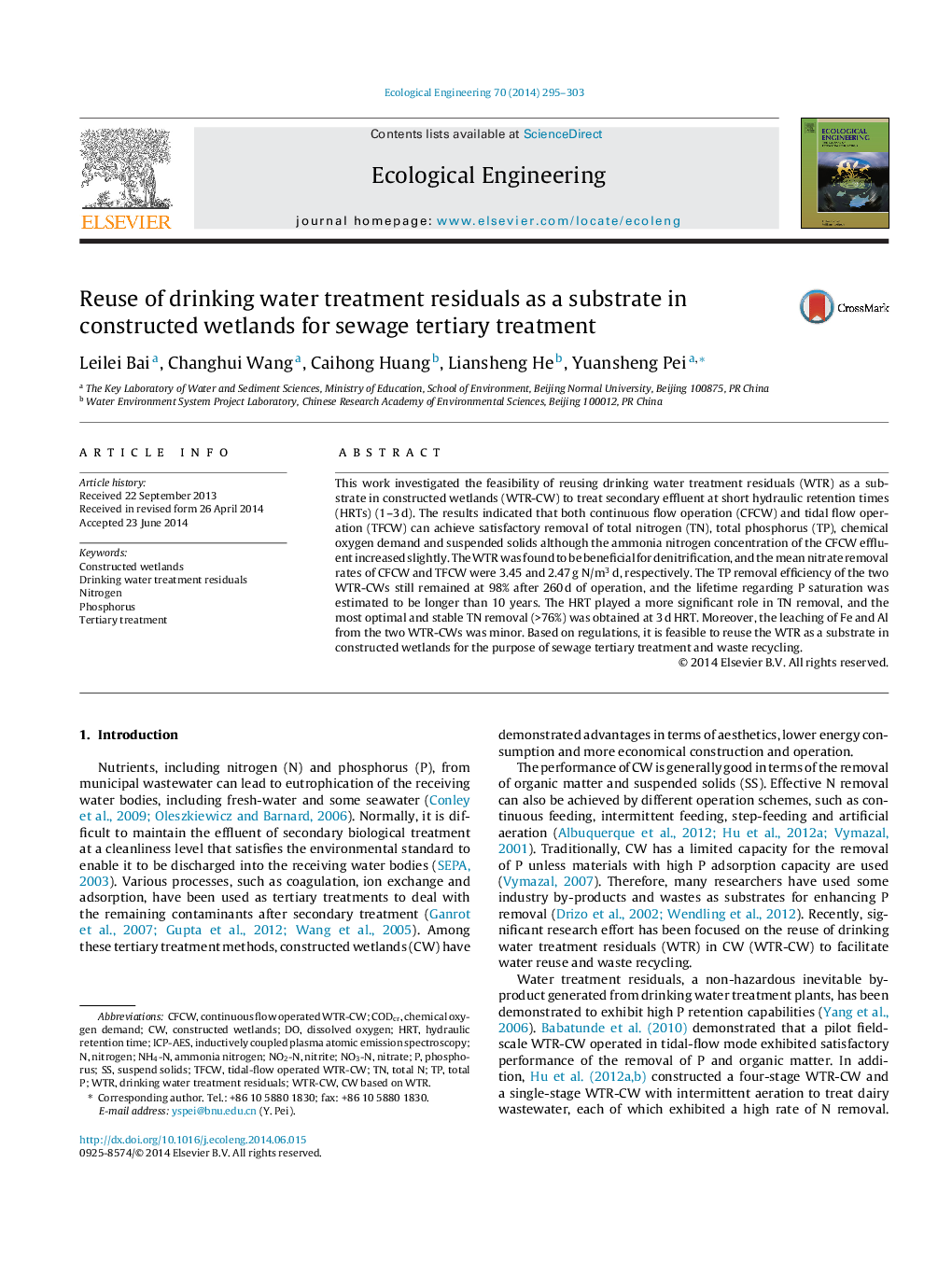| کد مقاله | کد نشریه | سال انتشار | مقاله انگلیسی | نسخه تمام متن |
|---|---|---|---|---|
| 6302172 | 1618029 | 2014 | 9 صفحه PDF | دانلود رایگان |
عنوان انگلیسی مقاله ISI
Reuse of drinking water treatment residuals as a substrate in constructed wetlands for sewage tertiary treatment
ترجمه فارسی عنوان
استفاده مجدد از پساب های آب آشامیدنی به عنوان یک بستر در تالاب های ساخته شده برای درمان ترشحات فاضلاب
دانلود مقاله + سفارش ترجمه
دانلود مقاله ISI انگلیسی
رایگان برای ایرانیان
کلمات کلیدی
NH4-NNO2-NCODCrTotal PICP-AESNO3-NHRTAmmonia Nitrogen - آمونیاک نیتروژنdissolved oxygen - اکسیژن محلولDrinking water treatment residuals - باقی مانده های تصفیه آب آشامیدنیConstructed wetlands - تالاب ساخته یا تالاب مصنوعیchemical oxygen demand - تقاضای اکسیژن شیمیاییTertiary treatment - درمان ترکیبیhydraulic retention time - زمان هیدرولیکیinductively coupled plasma atomic emission spectroscopy - طیف سنجی انتشار اتم های پلاسما به صورت القاییPhosphorus - فسفرNitrate - نیتراتNitrogen - نیتروژنNitrite - نیتریتWtr - وترTotal N - کل N
موضوعات مرتبط
علوم زیستی و بیوفناوری
علوم کشاورزی و بیولوژیک
بوم شناسی، تکامل، رفتار و سامانه شناسی
چکیده انگلیسی
This work investigated the feasibility of reusing drinking water treatment residuals (WTR) as a substrate in constructed wetlands (WTR-CW) to treat secondary effluent at short hydraulic retention times (HRTs) (1-3Â d). The results indicated that both continuous flow operation (CFCW) and tidal flow operation (TFCW) can achieve satisfactory removal of total nitrogen (TN), total phosphorus (TP), chemical oxygen demand and suspended solids although the ammonia nitrogen concentration of the CFCW effluent increased slightly. The WTR was found to be beneficial for denitrification, and the mean nitrate removal rates of CFCW and TFCW were 3.45 and 2.47Â g N/m3Â d, respectively. The TP removal efficiency of the two WTR-CWs still remained at 98% after 260Â d of operation, and the lifetime regarding P saturation was estimated to be longer than 10 years. The HRT played a more significant role in TN removal, and the most optimal and stable TN removal (>76%) was obtained at 3Â d HRT. Moreover, the leaching of Fe and Al from the two WTR-CWs was minor. Based on regulations, it is feasible to reuse the WTR as a substrate in constructed wetlands for the purpose of sewage tertiary treatment and waste recycling.
ناشر
Database: Elsevier - ScienceDirect (ساینس دایرکت)
Journal: Ecological Engineering - Volume 70, September 2014, Pages 295-303
Journal: Ecological Engineering - Volume 70, September 2014, Pages 295-303
نویسندگان
Leilei Bai, Changhui Wang, Caihong Huang, Liansheng He, Yuansheng Pei,
